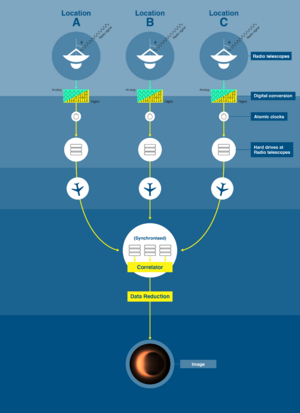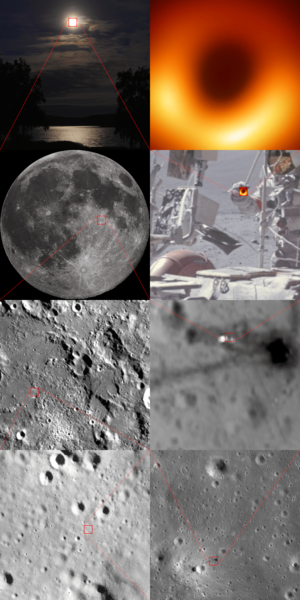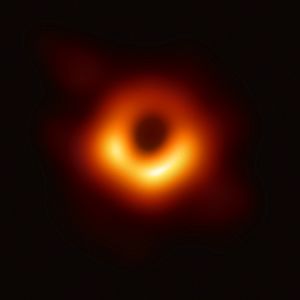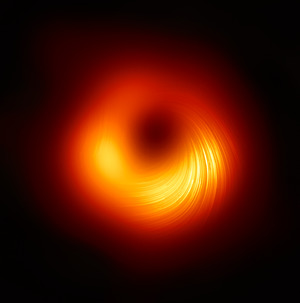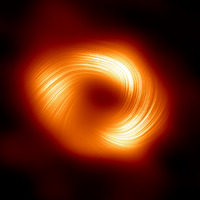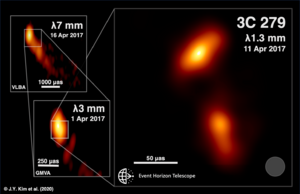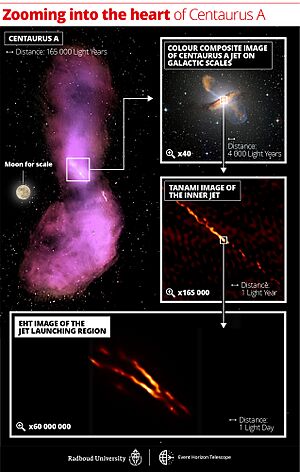Event Horizon Telescope facts for kids
| Established | 2009 |
|---|
The Event Horizon Telescope (EHT) is a special kind of telescope that is as big as the entire Earth! It's not one single telescope, but a team, or "array," of many radio telescopes located all around the world. By working together, they can see things in space with amazing detail.
The main goal of the EHT project is to take pictures of black holes. Black holes are so dense and have such strong gravity that not even light can escape them. This makes them impossible to see directly. Instead, the EHT looks for the "event horizon," which is the point of no return around a black hole. The EHT observes the glowing gas and dust that swirls around the black hole, creating a bright ring with a dark shadow in the middle.
This project is a huge international effort, with hundreds of scientists from over 20 countries working together. Their main targets are the two black holes that look biggest from Earth:
- The supermassive black hole in the center of the Messier 87 galaxy.
- Sagittarius A*, the black hole at the center of our own Milky Way galaxy.
In 2019, the EHT team shared the first-ever picture of a black hole, showing the one in Messier 87. Then, in 2022, they released a picture of Sagittarius A*. These incredible images help scientists understand more about gravity and how the universe works.
Contents
How the Earth-Sized Telescope Works
The EHT uses a clever technique called very-long-baseline interferometry (VLBI). This technique links many separate radio telescopes together so they can act as one giant, virtual telescope. The farther apart the telescopes are, the sharper the final image can be. Because the EHT uses telescopes from different continents, its virtual "lens" is nearly the size of Earth.
This allows the EHT to achieve an incredible level of detail, called angular resolution. It's like being able to see a tennis ball on the surface of the Moon from here on Earth!
Collecting the Data
To make this work, every telescope in the network needs to be perfectly synchronized. Each one uses an extremely precise atomic clock to time-stamp the radio waves it collects. The amount of data they record is enormous—so much that it can't be sent over the internet.
Instead, the data is stored on special hard drives. These hard drives are then physically flown by airplane to two main locations: the MIT Haystack Observatory in the United States and the Max Planck Institute for Radio Astronomy in Germany. This low-tech way of moving data is sometimes called a "sneakernet."
At these centers, powerful supercomputers combine all the data from the different telescopes. They carefully line up the signals using the atomic clock timings to create a single, detailed picture.
Amazing Pictures of Black Holes
The EHT has given us the first-ever direct look at the area just outside a black hole's event horizon.
The First-Ever Picture: M87*
On April 10, 2019, the EHT team made history by releasing the first direct image of a black hole. It showed the supermassive black hole at the center of the Messier 87 galaxy, which is now called M87*.
The image shows a bright, fiery ring of hot gas orbiting a perfectly round, dark circle. This dark area is the "shadow" of the black hole, cast against the glowing material behind it.
Proving Einstein Right
This picture was a huge test for Albert Einstein's theory of general relativity. His theory predicted exactly what a black hole should look like: a dark shadow surrounded by a ring of light bent by gravity. The EHT's image matched the predictions perfectly!
The image also helped scientists measure M87* more accurately. They found it has a mass of about 6.5 billion times that of our Sun. Its event horizon is enormous, but the shadow it casts is even bigger, about 2.5 times the size of the event horizon itself.
In 2021, the team released a new image of M87* showing the black hole in polarized light. This helped them map the powerful magnetic fields around it, which are thought to be responsible for launching huge jets of material out into space. In 2023, using new computer methods, scientists released an even sharper image of M87* from the original 2017 data.
Our Galaxy's Black Hole: Sagittarius A*
On May 12, 2022, the EHT collaboration unveiled its second amazing picture: an image of Sagittarius A* (often called Sgr A*), the supermassive black hole at the center of our own Milky Way galaxy.
Sgr A* is much closer to us than M87* (about 27,000 light-years away), but it is also much smaller and less massive. Even though the two black holes are very different, their pictures look surprisingly similar up close. This shows that the laws of gravity described by Einstein work the same way for black holes of different sizes.
In 2024, the team also released an image of Sgr A* in polarized light, just as they had for M87*. This helps them compare the magnetic fields around both black holes.
Peeking at Powerful Jets
Besides taking pictures of black hole shadows, the EHT also studies other bright and powerful objects in the universe, like quasars and blazars. These are extremely bright centers of galaxies where a supermassive black hole is actively feeding on gas and dust.
As material falls into the black hole, some of it gets blasted out in the form of massive jets that travel at nearly the speed of light. The EHT has taken incredibly sharp pictures of these jets, such as those coming from the blazar 3C 279 and the galaxy Centaurus A. These images are 16 times sharper than any previous observations and help scientists understand how these amazing cosmic jets are formed.
A Global Team of Scientists
The Event Horizon Telescope project is only possible because so many different groups work together. The collaboration includes 13 main institutes:
- Academia Sinica Institute of Astronomy and Astrophysics
- University of Arizona
- University of Chicago
- East Asian Observatory
- Goethe University Frankfurt
- Smithsonian Astrophysical Observatory
- Institut de radioastronomie millimétrique (IRAM)
- Large Millimeter Telescope Alfonso Serrano
- Max Planck Institute for Radio Astronomy
- MIT Haystack Observatory
- National Astronomical Observatory of Japan
- Perimeter Institute for Theoretical Physics
- Radboud University
Who Supports the Project?
Major scientific projects like the EHT cost a lot of money and require support from many organizations around the world. Some of the main groups that provide funding for the EHT include:
- United States National Science Foundation
- European Research Council
- Ministry of Science and Technology of Taiwan
- Max Planck Society (Germany)
- National Council of Science and Technology (Mexico)
- John Templeton Foundation
- Gordon and Betty Moore Foundation
- Japan Society for the Promotion of Science
- Natural Sciences and Engineering Research Council of Canada
- Academia Sinica
- Smithsonian Institution


